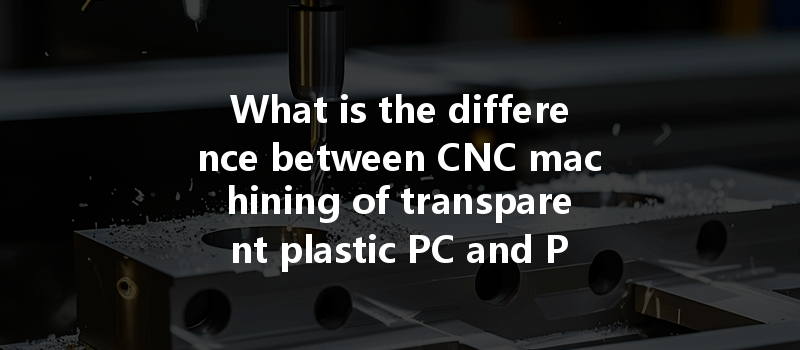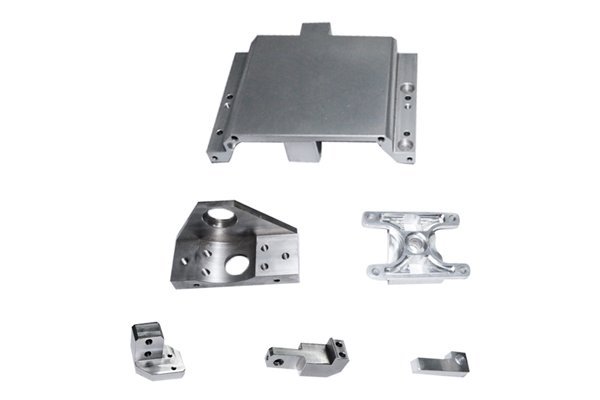Did you know that the global demand for transparent plastics is expected to reach nearly 8 million metric tons by 2025? This growing demand highlights the importance of innovative manufacturing techniques, one of which is CNC (Computer Numerical Control) machining. As industries look for versatile and high-performance materials, two popular options for achieving clarity and durability stand out: polycarbonate (PC) and polymethyl methacrylate (PMMA).
In this comprehensive guide, we will delve deep into the differences between CNC machining of these two transparent plastics, exploring their properties, advantages, machining processes, and applications. By understanding these intricacies, manufacturers can make informed decisions that enhance productivity and product quality.
CNC machining is a method that uses computer-controlled machinery to produce precise components from various materials, including metals and plastics. It allows for a high level of accuracy and repeatability, making it ideal for producing intricate parts that must fit perfectly within larger assemblies. The CNC machining process often involves several stages, including designing, programming, machining, and finishing.
Types of CNC Machining
CNC machining encompasses a variety of processes, including:
Each process has its own specific applications and is suited for different materials, making CNC a versatile tool in modern manufacturing.
Understanding the fundamental properties of polycarbonate (PC) and polymethyl methacrylate (PMMA) is crucial for effectively using these materials in CNC machining.
2.1 Polycarbonate (PC)
Polycarbonate is a robust thermoplastic known for its exceptional toughness and impact resistance. Here are some key properties:
Due to these characteristics, PC is commonly used for eyewear, automotive components, and electronic housings.
2.2 Polymethyl Methacrylate (PMMA)
PMMA, often referred to as acrylic, is another transparent thermoplastic known for its glass-like appearance and excellent optical clarity. It possesses the following properties:
Applications of PMMA include signage, displays, lighting fixtures, and aquariums.
While both PC and PMMA have similar applications due to their transparency, their unique properties significantly affect the CNC machining process. Here are the critical differences:
3.1 Machinability
3.2 Tooling Requirements
3.3 Surface Finish

3.4 Applications of Machined Parts
When machining PC and PMMA, adhering to best practices can significantly improve the quality of the final products. Here are some essential tips:
4.1 Selection of the Right Tools
Choosing the appropriate tooling for the specific material being machined is critical. For PC, use carbide tools rated for high-impact resistance, and for PMMA, opt for tools designed for soft plastics to avoid chipping.
4.2 Adjustable Feed Rates and Spindle Speeds
Optimizing feed rates and spindle speeds based on the material can prevent excessive heat build-up, which is particularly important for PMMA. Generally, slower feed rates and moderate spindle speeds work best for finely machined surfaces.
4.3 Proper Tool Cooling and Lubrication
In CNC machining, tool cooling and lubrication are paramount, especially with tougher materials like PC. Utilize coolant systems to dissipate heat and extend tooling life. For PMMA, using minimal lubrication can prevent melting and improve surface finish.
4.4 Effective Dust and Chip Management
Both PC and PMMA can produce fine dust and chips that may not just be an environmental concern but can also hinder the machining process and part quality. Implementing an effective dust collection system helps maintain a clean work environment and ensures optimal performance.
4.5 Post-Processing Techniques
Consider post-processing techniques such as polishing for PC and slight finishing for PMMA to achieve that high-quality, optical clarity required in applications.
Understanding where PC and PMMA fit into the manufacturing landscape can illuminate their respective roles and advantages.
5.1 Applications of Machined PC
5.2 Applications of Machined PMMA
To further illustrate the concepts discussed, we can take a look at how specific companies are utilizing CNC machining for PC and PMMA parts.
Case Study 1: Eye Protection Manufacturer
An eyewear manufacturer switched from glass lenses to CNC machined polycarbonate lenses. The result was a 40% reduction in weight and an increase in impact resistance, leading to a 20% decrease in returns due to breakages. This change not only improved customer satisfaction but also lowered production costs.
Case Study 2: Retail Display Solutions
A display manufacturer focused on high-end retail solutions utilized PMMA for its cases. They were able to implement CNC machining to create intricate designs with minimal post-processing, thus achieving 15% faster production times and enhanced clarity that improved product visibility.
Understanding the differences between CNC machining of transparent plastics like polycarbonate (PC) and polymethyl methacrylate (PMMA) is essential for manufacturers seeking to optimize their processes. By recognizing the distinct properties, machining techniques, and applications of these materials, companies can tailor their operations to boost productivity and product quality.
The key takeaways from this guide include recognizing the machining challenges and advantages of both materials, employing best practices throughout the CNC process, and exploring practical applications for each type of plastic.
CNC machining continues to be a crucial element in enhancing manufacturing capabilities across industries. By investing time into understanding and mastering the differences between materials such as PC and PMMA, businesses can not only meet the growing market demand for transparent plastics but also stay competitive in an ever-evolving landscape.
For those in manufacturing, it’s worth pausing to consider how these insights can be applied to improve your processes, broaden your capabilities, and ultimately deliver better products to your customers.






